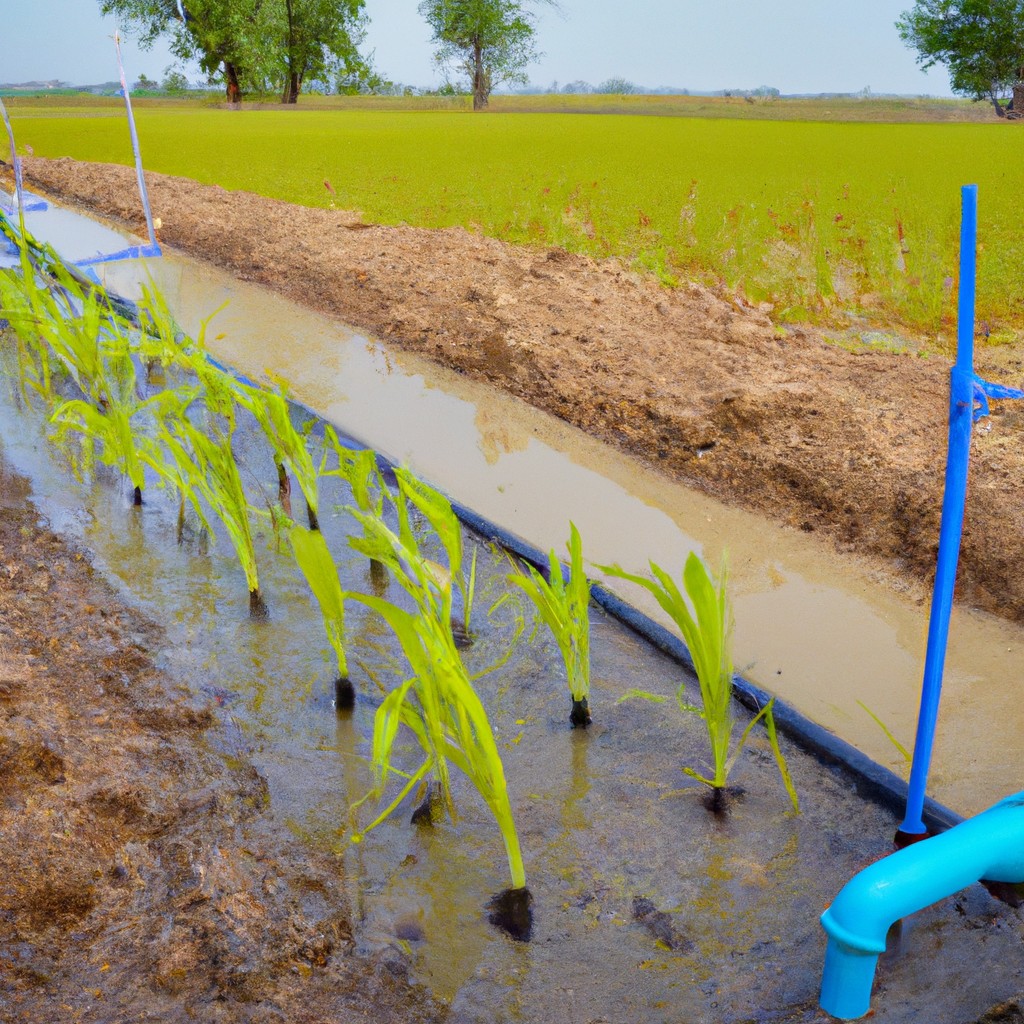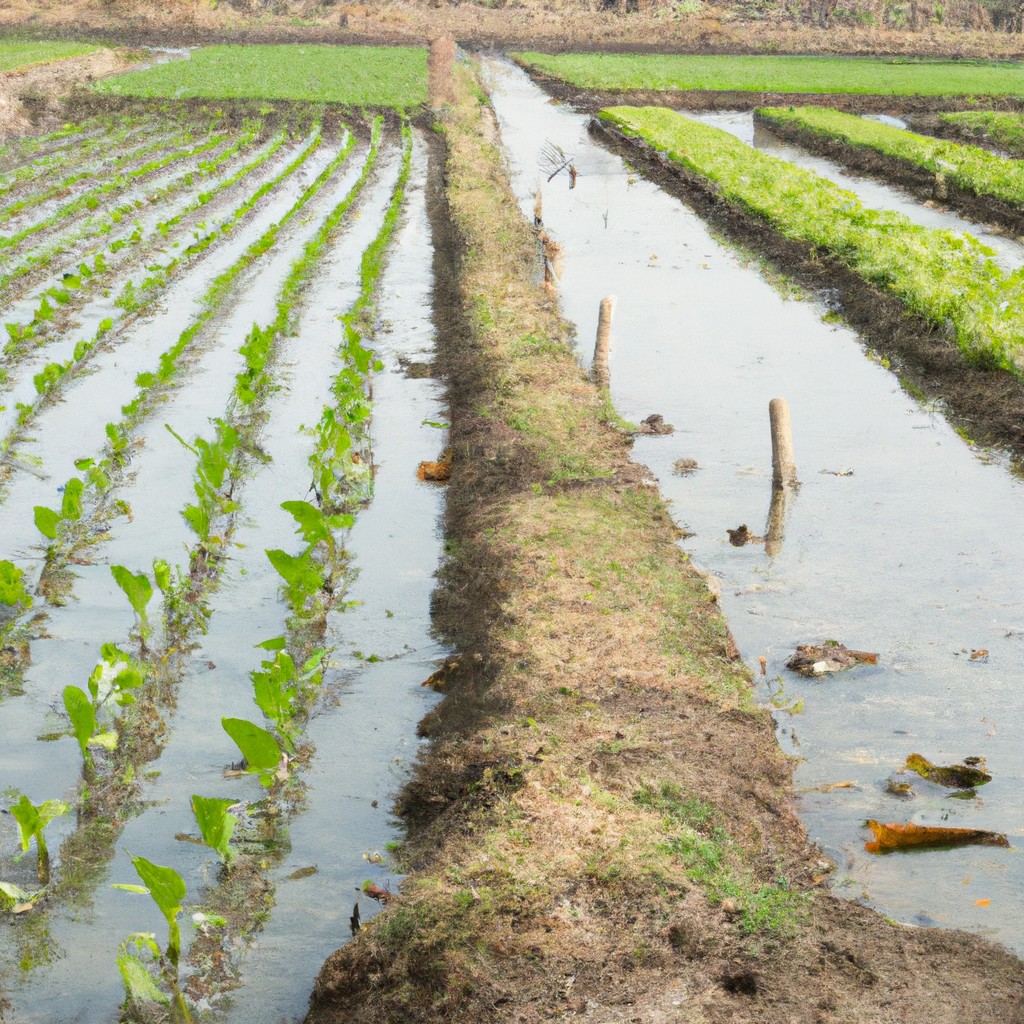Discover how AI is transforming agriculture by optimizing crop yields, conserving resources, and predicting environmental challenges.
Look Inside:
Benefits of AI in Agriculture

Artificial Intelligence (AI) breathes new life into modern farming practices by enhancing efficiency and reducing waste. Imagine a tireless farmer who never sleeps; that’s AI for you, monitoring crops round-the-clock. It’s like having a crystal ball too, predicting weather patterns and soil conditions to make smart planting choices.
Picture this: AI-powered drones take to the skies, their eagle eyes catching even the most bashful weed hiding amongst the corn. They’re not just spectators, though — they spray targeted herbicides, doing a big job with a small footprint.
And forget about the old game of guesswork with watering cans. AI irrigation systems serve up water just when the plants are whispering “I’m thirsty,” conserving that precious resource like a raindrop-hoarding camel.
AI is the unseen farmhand, cultivating a future where greener fields aren’t just a farmer’s pipe dream, but a daily reality. It’s the silent partner for the stewards of the earth, ensuring that every season brings with it the promise of bountiful harvests and sustainable practices.
Optimization of Irrigation Systems and Pest Detection
Tapping into the brains of AI shines a new light on the old-school methods of watering crops and keeping pesky intruders at bay. Smart irrigation systems adjust water delivery to the whims of the weather and the thirst of the plants, squeezing every drop of efficiency from the water we have. No more guesswork or wastage; we’re talking about giving each plant a personalized drink.
On the pest control front, AI’s eagle eye spots troublemakers long before they crash the dinner party. With cameras and sensors, these systems act like digital scarecrows—minus the flapping arms. They analyze images of crops to spot the early signs of disease or infestations, cueing farmers to intervene while the problem is still a hiccup and not a hurricane.
The beauty? These clever tools keep watch around the clock, freeing up our farmers to focus on other tasks and take a well-deserved breather. It’s all about efficiency without cutting corners—giving a whole new meaning to working smarter, not harder.
Challenges of AI in Agriculture
Despite the promising horizon AI brings to farming, hurdles exist that farmers and developers must clear. Data quality is a head-scratcher; for AI to give golden advice, it needs a mountain of reliable data. The bigger the data, the better the wisdom, they say. But collecting this, often in rural patches, involves some heavy lifting—both figuratively and literally.
Integration woes also pop up like unwanted weeds. Traditional farming equipment might look at the new AI tech like a foreign language. Getting these two to shake hands and work together requires a special kind of tech matchmaking.
Cost is another heavy bucket to carry for most farmers. While AI promises long-term savings, the initial price tag might make wallets weep. Not every farmer can dip into their piggy bank to fund an AI revolution on their land.
Lastly, brace for the learning curve rollercoaster. Adopting AI isn’t like learning to drive a tractor—it’s a bit trickier. Both farmhands and farm owners need to wrap their heads around this tech, which can be as slippery as catching a greased pig at times.
Yet, farmers are a tough breed, and with the right resources, they’ll plough through these challenges. After all, a bit of elbow grease never hurt anyone, especially if it means reaping the rewards that AI can sow.
Partnering With AI Development for Sustainable Farming
Farmers and tech experts are shaking hands more often these days, joining forces to bring the power of artificial intelligence to the fields. This collaboration is making waves in the way we grow our food, turning traditional farming on its head with a dash of digital wizardry.
For starters, AI could be the ace up our sleeve for tracking the health of crops with an eagle eye. Picture drones buzzing overhead, equipped with cameras and sensors that can spot a sickly plant from the clouds. This ‘see something, say something’ approach allows farmers to intervene quickly, before a small problem balloons into a full-blown crop crisis.
There’s also the magic of machine learning algorithms that devour data like kids at a candy store. These algorithms learn, grow smarter, and get better at predicting crop yields, which means less guesswork and more precision in planting and harvesting. It’s like having a crystal ball for farming, and who wouldn’t want that?
Moreover, when you think of mixing AI with sustainable farming, you envision a match made in heaven. AI can be the meticulous gardener, suggesting the precise amount of water and nutrients each plant needs, warding off waste and nurturing Mother Nature. Plus, it’s an eco-friendly sidekick, keeping an eye on soil health and helping farms reduce their carbon footprint. It’s like giving the planet a high five!
Teaming up with AI innovators can seem like a tango between tradition and technology. But even the most seasoned farmers are finding their rhythm with AI, incorporating it into their practices to harvest not just healthier crops, but also a future that’s greener and brighter. This isn’t just about selling more carrots at the market; it’s about cultivating sustainability for generations to come. And let’s face it, that’s a pretty exciting seed to plant.
Future of AI in Agriculture and Funding Opportunities
The horizon for AI in agriculture stretches far and wide, promising to revolutionize the way we grow our food. Farmers and technologists are teaming up to push the boundaries of what’s possible. With advanced algorithms, we’re looking at a future where smart farms become the norm, brimming with sensors and autonomous machines that work around the clock to feed the growing population.
Looking at the financial side, there’s a cornucopia of options for those ready to dive into smart agriculture. Governments recognize the value of sustainable farming practices, providing grants and subsidies to support innovation. Venture capitalists, too, have their eyes on the prize, funneling cash into startups that blend agronomy with silicon chips.
It’s not all sunshine, however. Rolling out AI across the farmlands isn’t a Sunday stroll. It requires significant investment in both technology and training. Plus, cybersecurity becomes a critical issue; after all, no farmer wants a hacker in their cornfield. That’s where strategic partnerships come in. Collaborations between tech giants, universities, and agricultural experts are sowing seeds for a future where high-tech farms are as common as scarecrows in a field.
With the wheels of progress churning, agriculture is set for an upgrade that could very well redefine our relationship with Mother Nature. As for those with their hands on the purse strings, they stand to reap what they sow, turning clods of dirt into digital goldmines.




